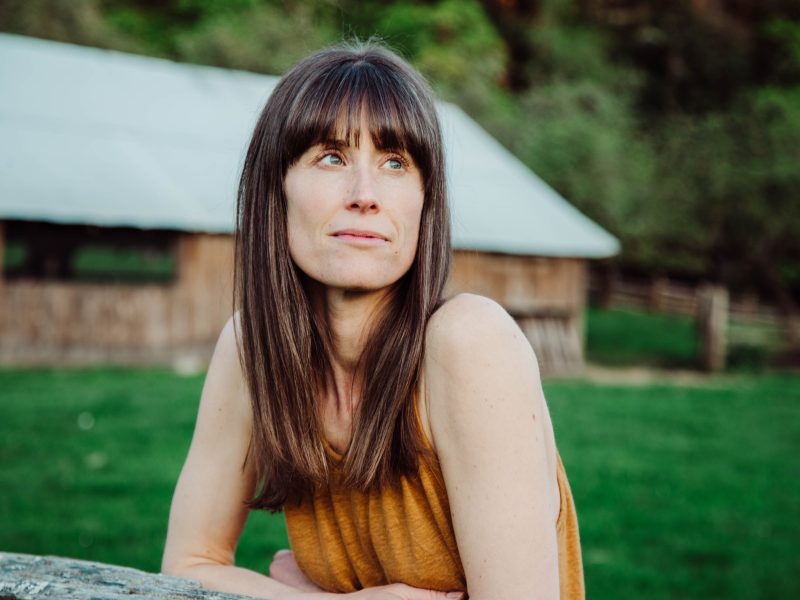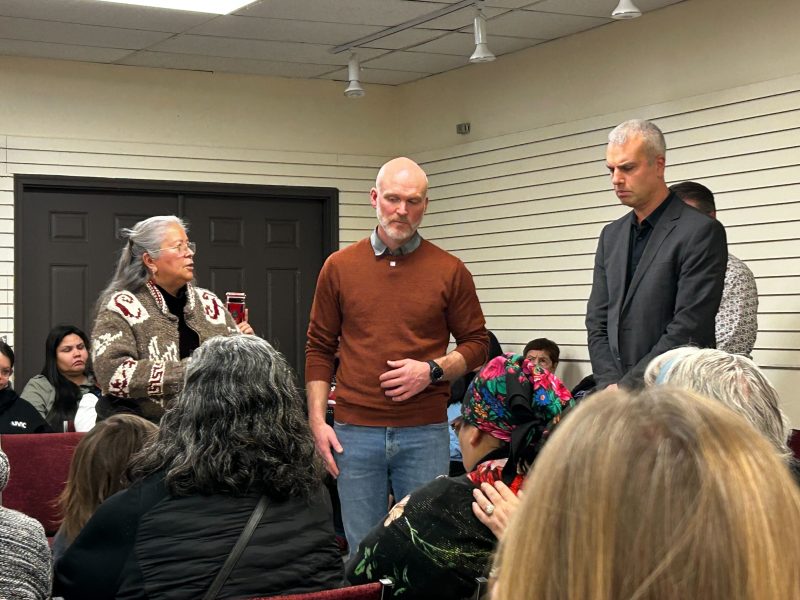
Just beyond the City of Duncan’s urban bustle, the Cowichan River (Quw’utsun Sta’lo’) flows quietly, passing under bridges, through forested corridors, past homes until it reaches its destination: the ocean.
Few things in life are certain, but the perpetual energy of the river is, at least, for now.
Cowichan Tribes acting chief Cindy Daniels remembers that, as a child, the Cowichan River was so deep that many would dive into it, off the top of the Black Bridge and Silver Bridge, which cross the river near Duncan. Nowadays, no one would think to dive into the shallow summer pools.
Increasingly common summer droughts, she said, have placed pressure on the water system, which in turn puts pressure on salmon and other fish trying to swim upstream to spawn.
“That’s our food fish that come up that river, and that’s critical to our culture and our wellbeing,” Daniels said.
Cleanup attracts huge crowd of volunteers
On Aug. 22, more than 110 people joined forces to help protect the river, through the collection of waste. The annual Lower Cowichan River Cleanup was spearheaded by Cowichan Tribes, the Cowichan Watershed Board and the Cowichan Valley Regional District (CVRD).
That morning, volunteers slipped into their gumboots, put on their gloves and got to work purging the riverbanks and river bottom of trash.

Before the groups dispersed, Cowichan Tribes Elder T’awahwiye’ (Philomena Williams) thanked the volunteers, saying the river is “medicine for everyone.”
Related: syilx family explains how wildfire impacts their ceremonies
Hours later, truck after truck returned, overflowing with shopping carts, tarps and bags full of styrofoam packaging, fast food containers and more.

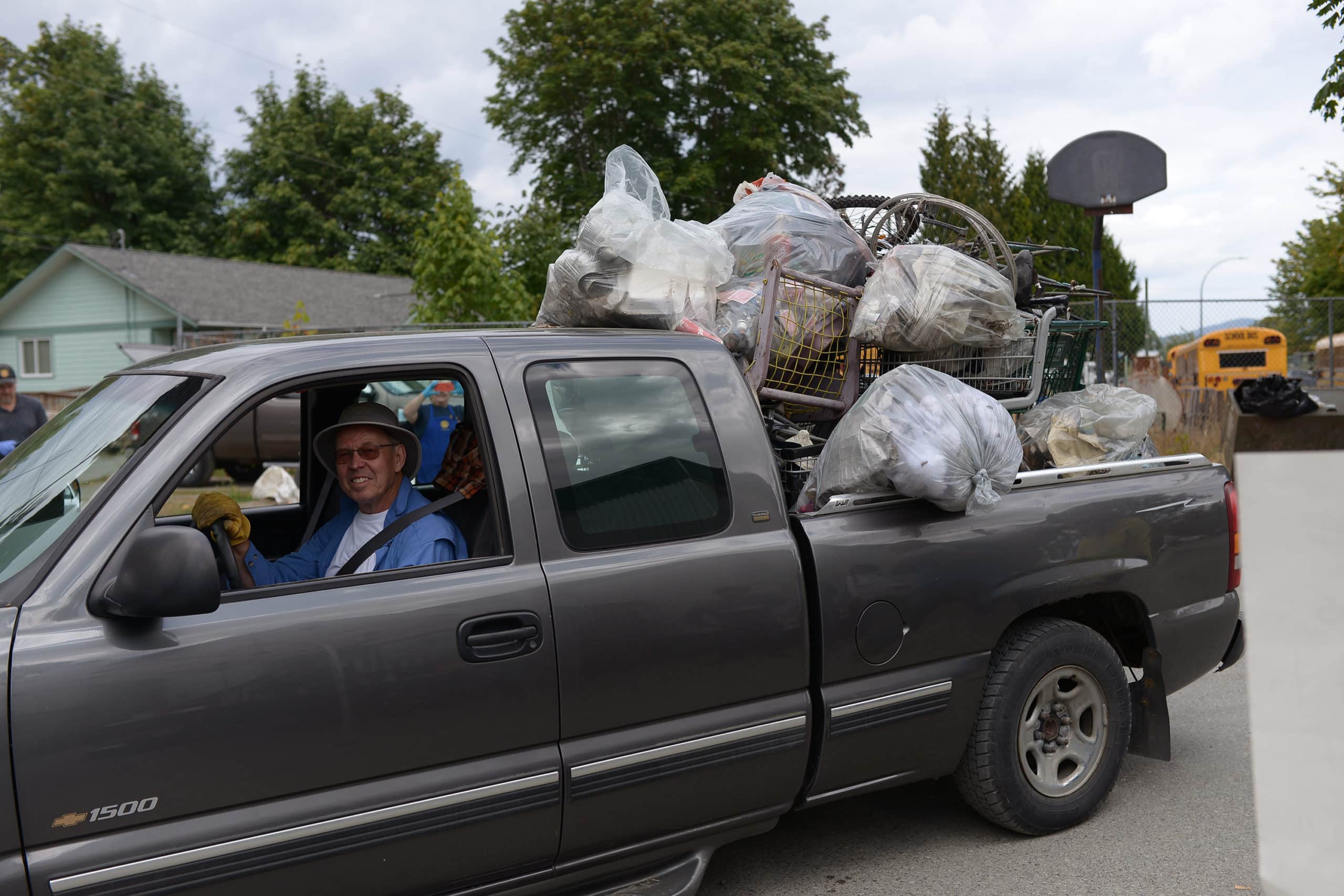
T’awahwiye’ watched as the vehicles pulled in.
“It’s so sad, it’s so sad. It used to be shocking, but now it’s just sad that it’s still happening. In this day and age,” she said.
“It’s all about respect,” T’awahwiye’ added, tapping her temple with her index finger, before putting her hand over her heart.
“Respect for the water, respect for what it is, respect for what it can do for you. Not only to cool you off, but in that spiritual aspect of it. This needs to be gotten back — to be strengthened.”
Everything, she explained, is connected.
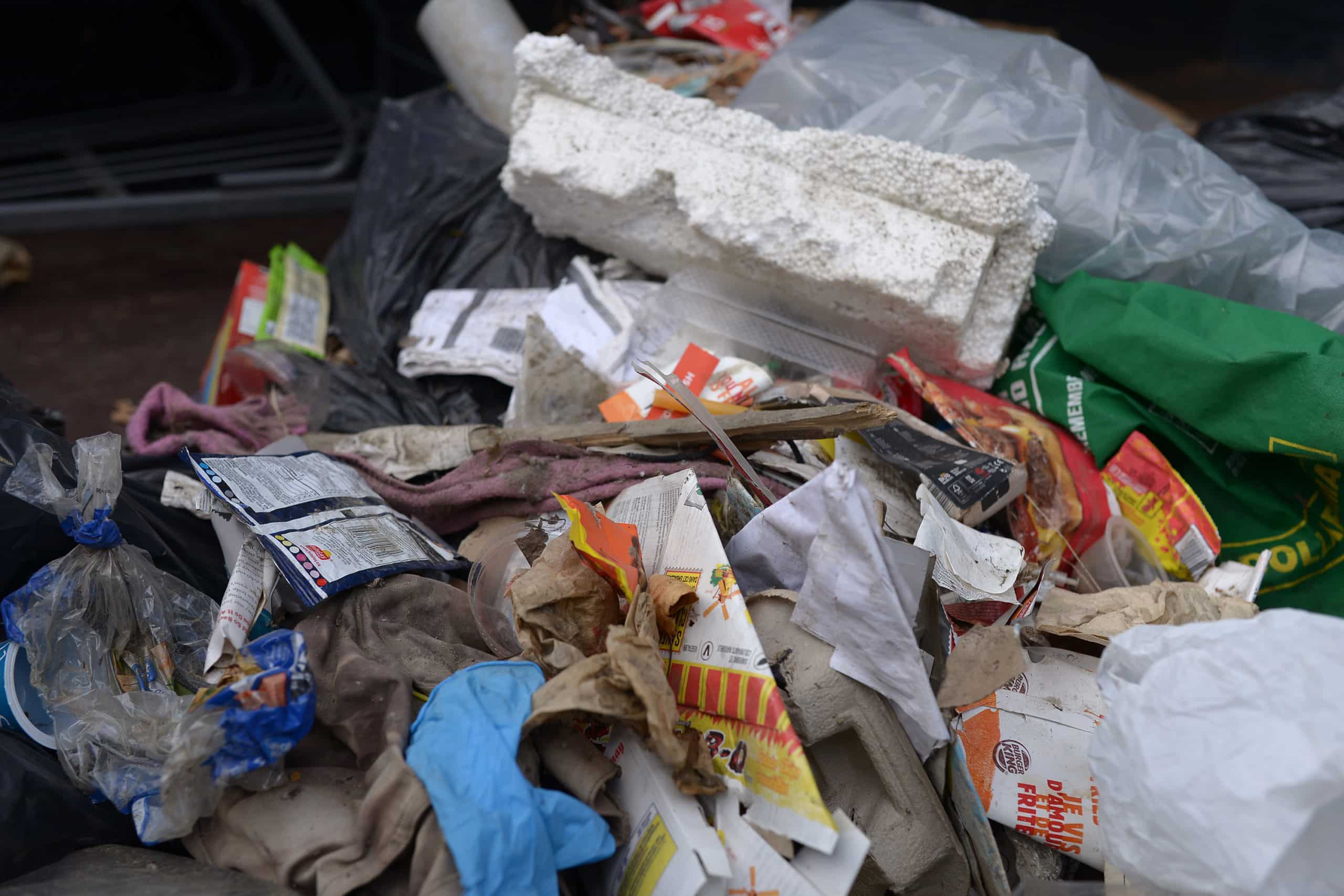
Earlier in August, a syringe was found in the belly of a fish caught in the Cowichan River.
“On Facebook a couple of months ago, one of our people cut a fish open and there was a needle inside the belly,” Daniels said.
“So that’s why this kind of work is important for us, for the Cowichan River.”
Scowering the river, top to bottom, around every corner
Tim Kulchyski, Audra Stacey, as well as four little ones, Simon, Nola, Tomo and Faith, hopped in their truck with canoe in tow and headed north for where Quamichan Creek meets the Cowichan River.
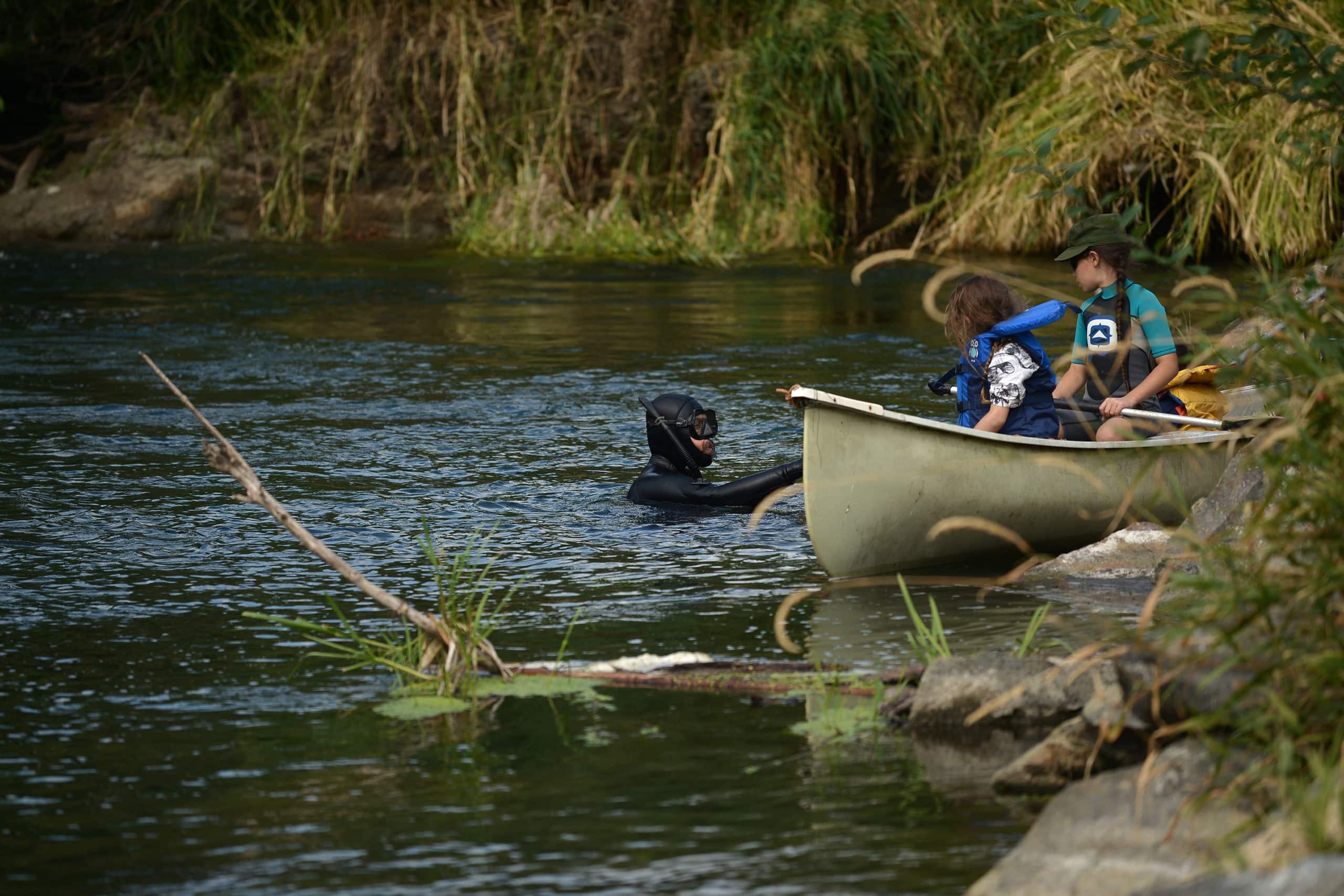
Putting in near the Quamichan Village floodwall, Kulchyski snorkelled while towing his children, looking for garbage on the river bottom. On the shore, Stacey and Simon followed along, collecting garbage as they found it.
It didn’t take long for them to spot a large orange bedroll, caught around a log-jam. After cutting it loose, they carried on down the river.
“It’s important because this isn’t our land. We’re basically visitors here. So we might as well wash the dishes,” said 13-year-old Simon.

Every year, their family participates in the cleanup.
“Our family has always been here, and always taken care of the river, so we need to keep doing that. We’re teaching the next generation to take care of it the same way,” said Stacey.
Kulchyski, a biologist with Cowichan Tribes, said it’s common for them to come across entire shelters, abandoned near or in the river.
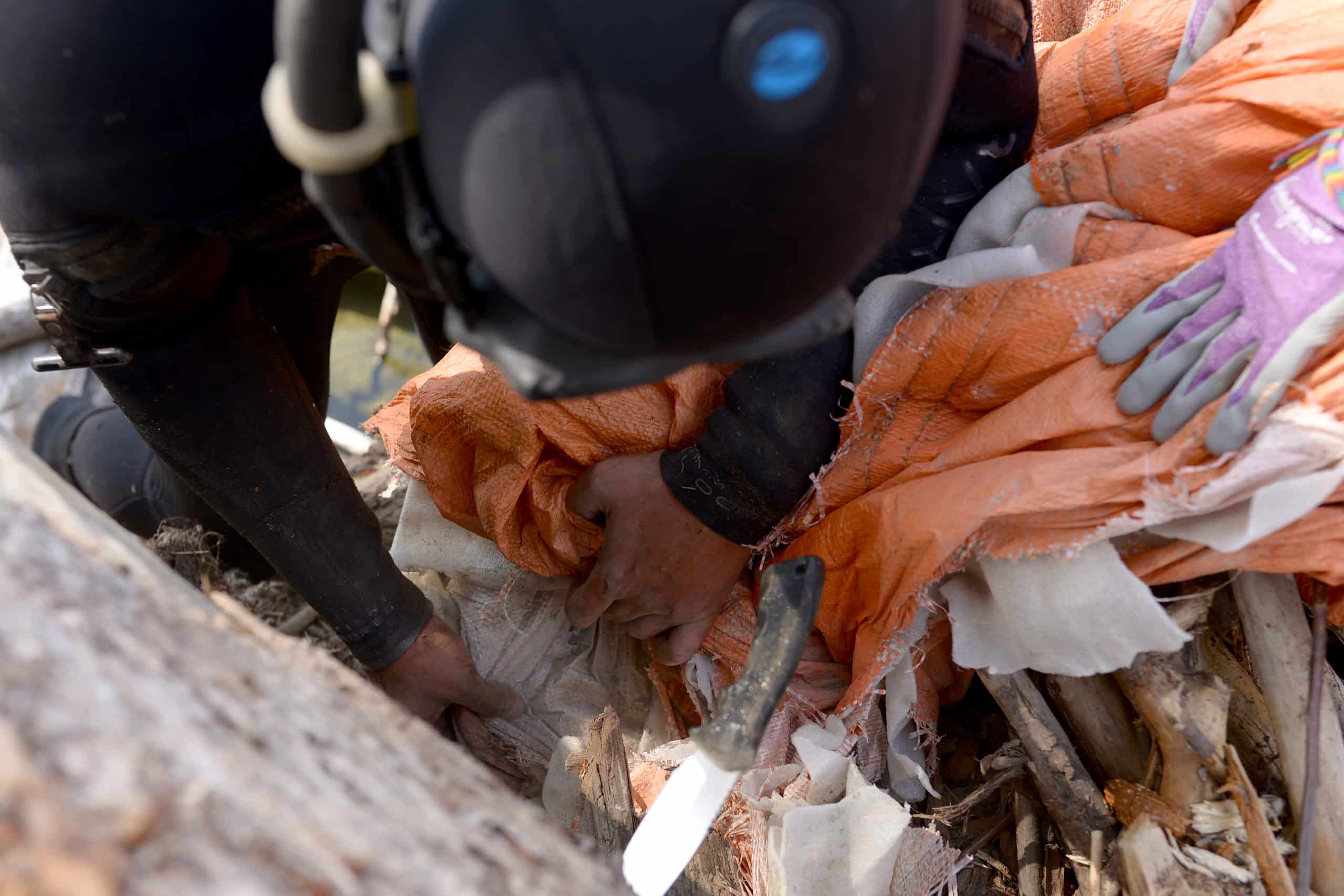
Even still, he explained the physical benefit of the annual cleanup is, “probably the smallest part.”
“One of the greater benefits is people being aware. … When people see the river first hand, see all of the gravel build-up, see the low-flows, and experience that.
“I think the real benefit is having people have the sense that there’s something that they can do, and that there’s a benefit — a benefit to coming and showing that for this amazing system that’s created this whole valley, created this ecosystem, can be and should be and is cared for,” Kulchyski said.

Reminiscing on what the Cowichan River used to be
Back at home base, on River Road near downtown Duncan, T’awahwiye’ explained that long ago, the people who used the river lived by an honour system. If something was harvested from it, like a fish, it would be used in full. Nothing would be thrown away. It was also a place of comfort and fun.
She remembers fish leather and natural dyes, being used to make traditional items. The river sustained them with many sources of food.
These ways, she said, have been put on a shelf. Although the ecosystem is still used by many, T’awahwiye’ questioned whether those who use it show the same level of respect and honour.
T’awahwiye’ remembers stories from her elders, who fished for sturgeon and other mighty fish, something that now sounds like a myth.

She told a story of her partner, Peter, now 93, who used to fish the Cowichan River with nothing but smoked salmon and dried clams in his pockets. Once, near the Silver Bridge, he caught a 62-and-a-half pound spring (chinook) salmon.
“That’s so fabulous to hear those stories, what this river was, how mighty it was. … Our Cowichan River is a heritage river, so we must treat it as so,” she said. [end]

